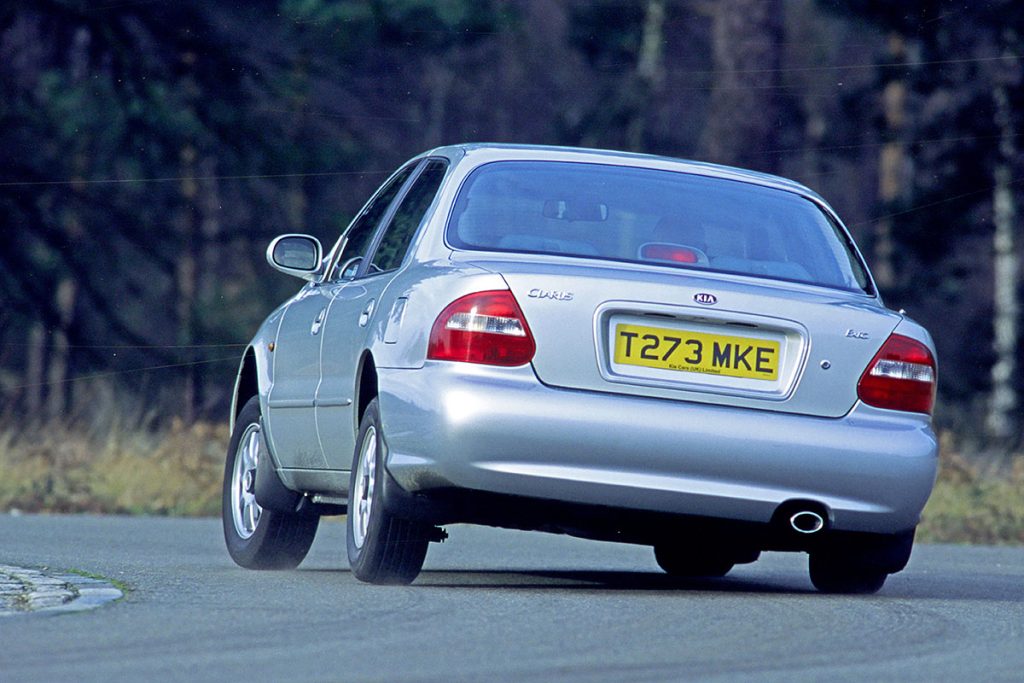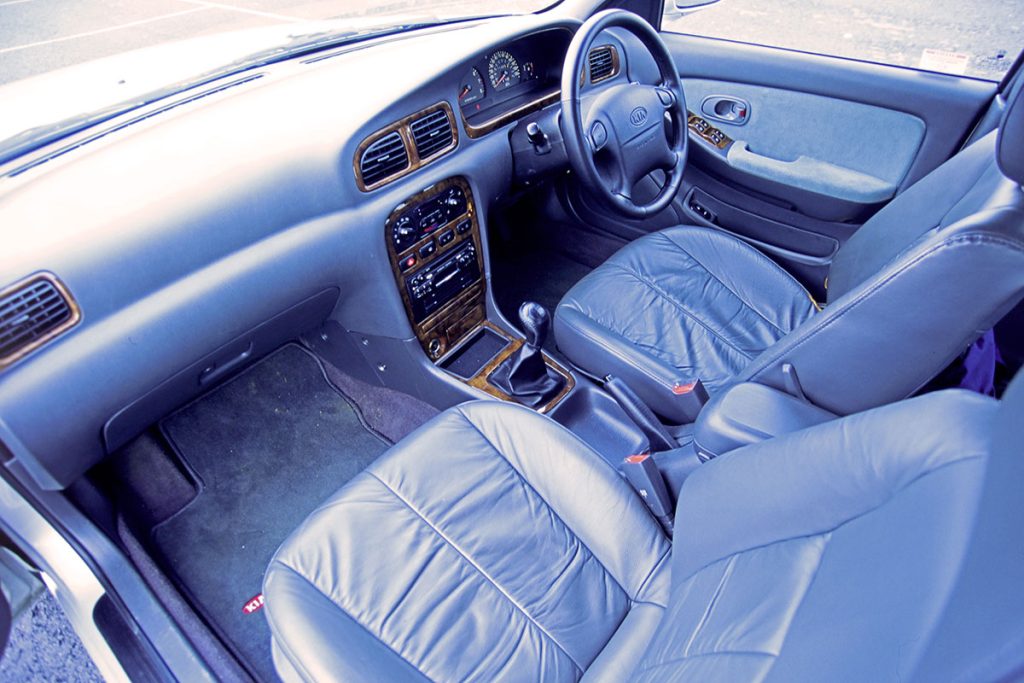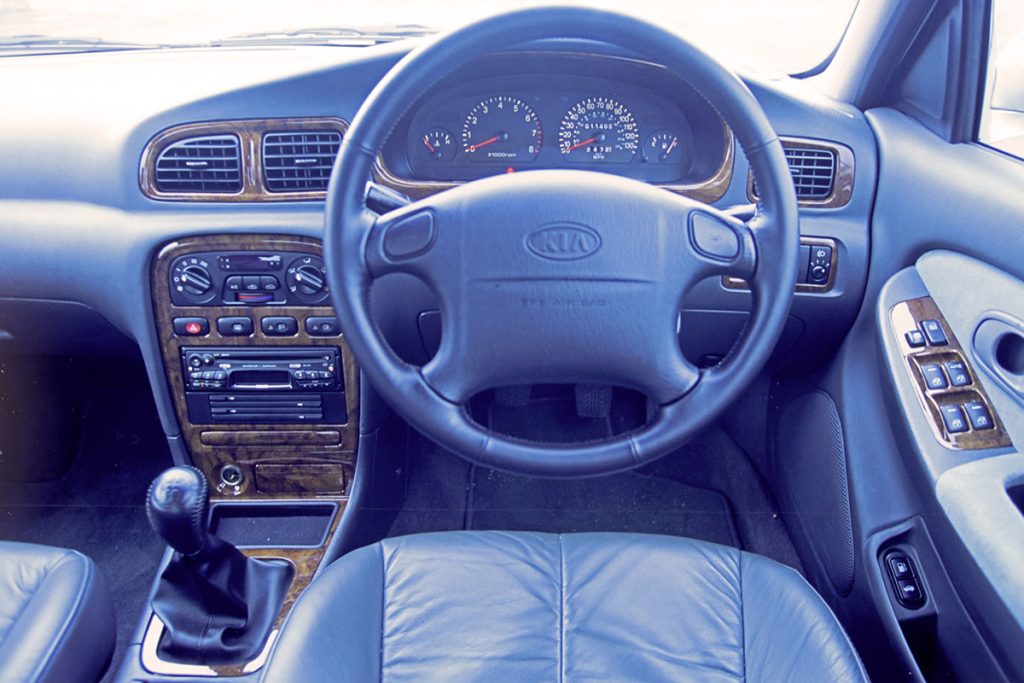You could turn up to Festival of the Unexceptional in pretty much any Korean-built car of the nineties, and your car would be one of the stand-out attractions of the day. When was the last time you saw a Kia Shuma or Mentor, a Hyundai Sonata, Pony X2 or Lantra? All of these have pretty much died out now and it’s much the same for the Kia Clarus, which has arguably the lowest profile of any Korean car of the era.
According to HowManyLeft, the number of Claruses (Clari?) on UK roads peaked at 1060 in the latter part of 2002, and that figure halved within eight years. By 2019 just a dozen examples were taxed and that figure has now plummeted to a mere three, with another 17 on SORN. How many of those 17 cars actually exist is anybody’s guess, but you can bet that most won’t be returning to the road any time soon; can you imagine trying to track down any parts unique to this mid-range saloon?

Launched in its South Korean home market as the Credos in 1995, it took another four years for the Clarus to get to the UK, by which point it had also been launched in Australia. Buyers there couldn’t have been less interested, with just a few hundred examples sold during the three years that it was on sale. The thing is, the Clarus was a pretty decent car for those who prized reliability and value for money above engaging dynamics.

The Clarus was one of Kia’s earliest vehicles, after the company launched into car production with the Pride in 1991. Just like the Pride, which was a rebadged 121, the Clarus was another repurposed Mazda, this time a 626 first seen in 1991. So by the time UK buyers got to sample the Clarus, it was already pretty long in the tooth.
The Clarus was unveiled to UK buyers to absolutely no fanfare at all, in September 1999. This was a car so insignificant to UK buyers that Autocar didn’t even bother to review it; this was the magazine that tested every car even vaguely relevant to the UK market, in a bid to fill its pages each week. CAR took the same approach, and for some reason even evo magazine was indifferent to the Kia’s charms(!), but there was one title that did put the Clarus through its paces, and that was Top Gear. Driven back to back with the Shuma, which didn’t impress very much, the Clarus fared rather better.

Upon its arrival in the UK, Kia trumpeted the Clarus as ‘a new flagship saloon which brings executive equipment levels to the keenly competitive upper-medium sector’. The problem was that despite the Clarus having been updated before it arrived here, its equipment levels couldn’t compete with those of much more sophisticated European rivals. If you wanted navigation, a sunroof or cruise control on your Clarus, you’d be disappointed. The same went for passenger or side airbags, along with electric adjustment or heating for the front seats.
Pitted against cars such as the Peugeot 406, Citroën Xantia, Ford Mondeo, Vauxhall Vectra and Volkswagen Passat, the Clarus offered decent value. Available only as a four-door saloon, the entry-level 1.8 SX was priced at just £11,000, while the range-topping 2.0 Executive auto was a very competitive £14,295; you’d have to find £15,300 to secure a mid-range Peugeot 406 1.8 LX or £17,000 for a Mondeo 2.0 GLX saloon. Even better, the Kia came with a three-year or 60,000-mile warranty, which those rivals couldn’t touch because they were all still limited to just 12 months.
Top Gear’s test car was a mid-range 2.0 GSX and for £12,495, buyers could enjoy the comforts of air conditioning, a radio/cassette player, alloy wheels, anti-lock brakes, a driver’s airbag, electric windows and door mirrors, power steering, remote central locking, a folding rear seat, plus height adjustment for the steering wheel and front seats. Meanwhile, the 131bhp engine offered brisk performance, with a 0-60mph time of 10.9 seconds and a top speed of 121mph.

The magazine’s Tom Stewart was impressed by the equipment levels, roomy interior, exterior design and weighting of the major controls, over-light steering aside. Low-rent cabin materials and poor ride quality counted against the Clarus, but overall the Kia was judged to be a pretty sound buy, if value and reliability were your priorities. This was clearly not a car for enthusiast drivers though, or anybody who was image conscious…
By July 2001 the Clarus was history, replaced by the Hyundai Sonata-based Magentis, which made much more of an impact. More than 4600 of those were sold in the UK, and even now there are almost 1000 of them taxed and still being driven on UK roads. However, that number has halved within just three years, so give it a bit longer and that’ll be another large Kia saloon that’ll be all but extinct and highly prized among FOTU fans.
Read more
The original Kia Rio attracted no second glances
Cars That Time Forgot: Kia Elan
Hyundai built the modern-day Pony we didn’t even know we wanted








What a great article! I have both a Clarus and a Magentis and I feel seen. For once.
Wow kinda makes me realise how uncommon my mk1 kia carens is it’s a 1.8 sx and their cannot be that many left now